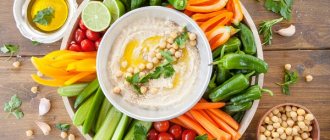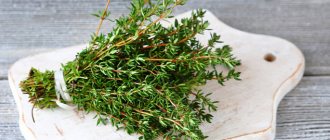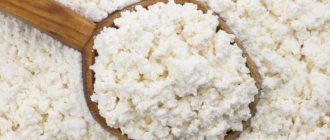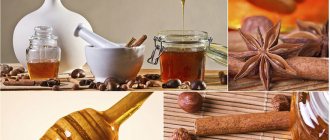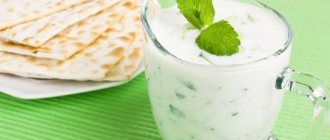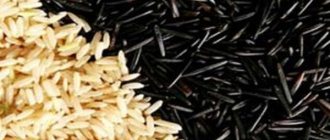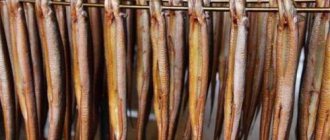Characteristic
In the table you can familiarize yourself with the main general characteristics of the product in order to understand what flower honey looks like and what it should be like.
| Characteristic | Description |
| Color | Typically, the shade of flower honey is light, from golden to yellow. However, honey is sometimes found in dark amber and almost white colors. |
| Taste | The taste qualities are common to any honey; a distinctive feature of floral honey is a long honey aftertaste. |
| Aroma | It is usually unobtrusive, floral, light and slightly spicy. The aroma is multifaceted. |
| Crystallization time | It varies, ranging from quick to long-lasting. Most polyfloral varieties are candied by winter. This accelerated crystallization is explained by the significant presence of fructose. |
| Viscosity | Honey is quite viscous, not thick. |
| Calorie content | The calorie content of bee honey is approximately 303 kcal per 100 grams. |
| Geography of collection | Honey is collected everywhere, taking into account the growth of a particular type of flower. Accordingly, different types of honey are distinguished, for example Bashkir, taiga or Altai. |
| Collection period | Flower honey is often collected in the summer. But the beginning of the season is considered to be the end of spring, and the end is the beginning of autumn. In accordance with this, there is May or summer honey. |
It is important! It is recommended to store honey in glass or colorless plastic containers. This is because the color of the product may be affected by the container in which it was stored. For example, iron can make honey redder, but copper can make it green, blue, or a mixture of colors.
Types of flower honey
The unique healing product can be made from various flowering plants, and their diversity allows bees to create a variety of tasty combinations. There are four main types:
- forest;
- mountain;
- meadow;
- steppe.
Plants determine quality and beneficial properties. Forbs indicate that insects collect nectar from different flowers. This determined the types of flower honey:
- Monofloral product is the main part (minimum 50%) of pollen from one plant. It is rare. Common varieties: acacia, buckwheat, sunflower, orange.
- A polyfloral product is a combination of pollen from two or more plant species. Subtypes differ in time and place of collection, external indicators. The physical properties are determined by the honey plants that dominate the area.
The most common types of honey include linden, buckwheat and sunflower. No less common are honey plants such as sage, acacia, thyme, chamomile and geranium. And among the rarer monofloral varieties, orange and eucalyptus honey can be distinguished. But in most cases, flower honey refers to herbs. Such polyfloral varieties differ from each other in consistency, color range, geography and time of collection.
Honey varieties - origin
According to its botanical origin, natural honey can be flower, honeydew or mixed. Flower honey is a product of bees processing plant nectar.
It can be monofloral (from one plant species) or polyfloral (from several plant species). Honeydew honey is formed when bees process honeydew and honeydew, which they collect from the stems and leaves of plants. Blended honeys are made from a natural mixture of flower and honeydew honeys.
Monofleral honey is called by the type of nectar-bearing plant: linden, buckwheat, heather, etc., polyfloral honey is designated as a flower collection or by the land where the bees collected nectar: meadow, mountain-taiga, field, etc. Monofloral honeys are less common than polyfloral honeys.
The regional characteristic determines the republic, region or region where honey plants grow. There are varieties of honey obtained, for example, from the Bashkir or Far Eastern linden.
Technological attribute means the method of extracting and processing honey: centrifugal, honeycomb, sectional, pressed. Thus, centrifugal honey is obtained by pumping it out of combs in a honey extractor, while cellular honey is obtained in natural packaging, ideally clean and ripe. Sectional honeycomb - honey enclosed in special sections made of thin plywood or food-grade plastic; the section holds about 500 g of honey. Pressed - obtained by squeezing: the honeycomb deteriorates.
The type of honey can be judged by its appearance, aroma and taste, however, for a more accurate and reliable determination of the variety, it is necessary to use laboratory methods for determining the organoleptic and physicochemical characteristics of honey.
Acacia honey
One of the valuable varieties of honey. It is collected by bees from two types of acacia - white and yellow. Honey collected from yellow acacia has a light yellow color, while honey from white acacia is almost colorless.
Acacia honey has a subtle floral aroma and a mild taste; it does not have that honey bitterness inherent in other types of honey (for example, buckwheat or chestnut).
One of the distinctive properties of acacia honey is its ability to remain in a liquid state for a long time; it begins to sugar about a year after it is collected. The main area for collecting acacia honey is the south of Russia, the Caucasian foothills.
Medicinal properties. Due to its high fructose content, acacia honey is easily absorbed by the body and is suitable for diabetic and baby food. Due to a number of properties, it is also called “baby” honey - it does not cause allergies. Contains a large amount of carotene and enzymes that help improve digestion.
Its antiseptic properties are used in the treatment of conjunctivitis and other eye diseases, as well as in the treatment of neurodermatitis and eczema in the form of aqueous solutions and ointments.
When consumed regularly, acacia honey helps lower blood pressure, has a mild calming effect and has a beneficial effect on mental disorders and nervous breakdowns.
Acacia honey is recommended to be consumed at night for insomnia. Its healing properties are also noted for various gastrointestinal diseases, kidney and liver diseases.
Beneficial properties of flower honey
The beneficial properties of flower honey directly depend not only on the quality of the product, but also on the type of pollen that dominates its composition.
- Sage honey is recommended for those who have skin diseases; it heals ulcers, rashes, peeling, and purulent wounds.
- If the product is based on thyme, then it has an anthelmintic and diuretic effect.
- Geranium, as the dominant part, is necessary for the treatment of the intestines, kidneys and stomach.
- This product helps with gout and pain in the lumbar region.
- The benefits of flower honey have been proven in many different studies and clinical trials.
It is recommended for:
- Healing burns, cuts and wounds
- Increasing performance, increasing the effectiveness of mental and physical activity
- Providing antiviral, antibacterial and antifungal effects
- Improving blood quality, controlling free radicals in its composition
- Sugar replacements for diabetes
- Improves digestion
- Reduces sore throat, cough, and nasal congestion
- Treatment of conjunctivitis
- Relieving tissue inflammation
- Preservation of calcium in the body
- Maintaining the human immune system
One of the unexpected, but proven effects is the treatment of neuroses and mental disorders.
The product has a calming effect and helps stabilize internal sensations and states.
For athletes, a natural storehouse of vitamins and minerals is an excellent way to quickly and efficiently restore strength after training.
Flower honey (GOST)
Flower honey is honey produced by honey bees from the nectar of plant flowers. Definition according to GOST.
Natural honey is a natural, sweet food product - the result of the vital activity of bees, produced from plant nectar or secretions of living parts of plants, or secretions of insects parasitizing on living parts of plants, which bees collect, transform, mix with special substances they produce, and put into cells combs, dehydrated, accumulated and left in the combs to mature. Definition of a sweet product according to GOST.
Admission rules
Despite all this, the benefits of flower sweetness are not absolute. Like any product or medicine, it has its own contraindications.
The most important thing is that sweetness should be taken in moderation. If you do not follow this rule, it can harm the body. For example, given its high calorie content, natural honey can contribute to the development of obesity and provoke diabetes.
The product is strictly contraindicated for people who are allergic to pollen and other bee products.
It is best to take natural honey in the morning, on an empty stomach, with slightly warm water. But there is no point in drinking it with hot tea: due to strong heating, its benefits are lost, leaving only the calorie content.
Thus, flower honey, being polyfloral, is one of the most delicious and aromatic, and can be used as a useful dietary supplement for many diseases. It works great as a valuable dietary and preventive product. At the same time, the product does not have significant advantages in comparison with other varieties.
To make it easier to calculate nutritional value, you can use the following table:
| Weight measure | Nutritional value, kcal* |
| 1 teaspoon (12 g) | 36,36 |
| 1 tbsp. spoon (35 g) | 106,05 |
| Glass (360 g) | 1090,8 |
| Cup (380 g) | 1151,4 |
* – the calorie content of a variety may differ up or down by 10-15%.
Dosage
The body perceives flower honey best in the morning, on an empty stomach. The standard dosage is 1 tsp, if you want to increase it, it is better to consult a doctor, especially if you have diabetes. The main thing is not to cause harm to your health.
Flower honey should not be added to very hot tea - at 40 degrees all its beneficial properties will be neutralized, only a sweet taste will remain. It is better to wait until the drink cools down, or spread the sweet natural medicine on a piece of bread. Then both taste and benefits will be preserved.
Features of the use of linden and flower honey
Linden sweetness is better for colds and flu, as well as for treating skin lesions. This is due to the presence of farnesol, which has excellent antibacterial properties.
It is recommended to consume it as a snack with tea or warm milk.
This product is often given to children, used in gynecology and externally, as it has excellent antimicrobial properties, and allergies to linden pollen are rare. So, to treat rashes, inflammations, heal burns and wounds, a honey compress is made from this product. For this, 2 tbsp. spoons of this sweetness are placed on a piece of gauze, applied to the affected area of the skin and secured with a bandage. This compress should be changed every 3 hours.
A mixture of this product and flour helps with boils (1 tablespoon of each product + a little warm water). This mixture is placed and fixed on the affected area overnight. For colds, add 1 teaspoon to a warm drink (no more than +40°C). For bronchitis and cough, a mixture of linden honey and radish juice in a 1 to 1 ratio helps well.
Flower honey is indicated for disorders associated with nerves, and it is also better suited for restorative processes due to its composition containing more glucose and ascorbic acid. It is good as a general tonic in a honey-lemon drink, teas, mixtures with nuts and dried fruits.
They love to use this variety in cooking, adding it to drinks and desserts, cottage cheese, marinades and salad dressings.
In any case, the greatest benefit will come from a natural product that has been properly stored and not heated above 40°C. Nutritionists recommend eating this sweet before meals, since consuming it during the main meal puts too much strain on the digestive function.
Important! In order not to cause harm to the body, this sweetness should be consumed according to the recommended standards. Adults are recommended to consume no more than 2 tbsp.
spoons, and for children - up to 2 teaspoons.
Contraindications to the use of flower honey
Of course, honey is useful, but you should know that there are some contraindications.
- There is no need to consume honey if you have an allergic reaction to it or other types of beekeeping products.
- The second contraindication to the use of this type of honey is diabetes. However, in case of diabetes of the second degree, honey can still be taken, but in very small quantities and under the supervision of a doctor.
- Also, in acute forms of pancreatitis, ulcers and gastritis of the stomach, it is best to avoid honey.
- Honey should not be given to children under two years of age.
- Pregnant and breastfeeding women should take it with caution.
Excessive consumption of this product may cause allergies and negatively affect the child's health.
Signs of a honey allergy are:
- Severe suffocation
- Eczema
- Redness and itching of the skin
- Airway swelling
It should also be remembered that at storage temperatures above 40 °C, honey loses its properties, and when it exceeds 60 °C, when mixed with water, it releases a carcinogen that causes tumors and promotes the growth of existing ones.
Although, this is only relevant for purchased honey, which is full of chemical additives and various impurities. In its pure form, it does not contain any carcinogens.Since its consumption causes an increase in body temperature, increasing sweating, the load on the heart increases. This means that in case of heart disease, the amount of product consumed should be limited. Therefore, you should not include it in the diet after training.
How to choose flower honey, buying tips
Since this is a natural product, its price is high, although moderate. And yet, for the sake of enrichment, many try to fake honey. Only by purchasing real honey can you be sure that its healing properties will be what you expect. It is very difficult to distinguish flower honey from fake honey.
- This product is best purchased from trusted sellers, as well as in specialized stores. Then the likelihood of buying low-quality honey or fake honey is incredibly small.
- Real honey crystallizes quite quickly, and it is almost impossible to find a liquid version in winter.
- The taste of the natural product will be reminiscent of flowers and herbs, and will also have an aromatic smell. Its aroma will never be strong. Its color is similar to the color of other types of honey.
- If you feel cloying sweetness, then it is better to refuse such a purchase. Flower honey is not so sweet.
- Good honey does not drip from a spoon, but flows in a continuous thin “thread”, forming a light slide on the surface that will not settle for a long time.
Flower honey is rightfully considered one of the most aromatic and delicious varieties. Thanks to the valuable substances contained in its composition, the delicacy is not only tasty, but also healthy for all family members, including children, and knowing how to take it, you can not only protect yourself from seasonal colds and infections, but also cure many other diseases.
How to test honey
In order to have no doubt that flower honey will be not only not harmful to health, but also as beneficial as possible, you need to choose it carefully.
If you buy at the market or from friends, be sure to arm yourself with a spoon: if you take a spoonful of nectar and turn it, the good honey will be wound, and when poured back, it will form a slide.
When buying in the autumn and later, you should pay attention to the crystals. They are sure to form if it is not a chestnut or acacia species, since they remain liquid all year round.
There should be no foam on the surface of the nectar.
You can also dilute honey in water; it should completely dissolve.
Do not forget also that often in large-scale production conditions, nectar is heated to give it a marketable appearance.
Such a product can no longer benefit the body.
If you have no other option other than going to the supermarket, then pay attention to the transparency of the product.
If it has an amber cast, the shine is bright, and everything around is visible through the nectar - it is most likely boiled and not at all healthy.
Use in cosmetology
Masks made from flower honey for hair are also incredibly useful; you can learn about them from the table.
| For what? | What will you need? | Cooking features |
| For general strengthening | Honey, onion, kefir, egg yolk, cognac | You need to chop the onion, squeeze out the juice and add all the ingredients to the liquid except the yolk. It is added at the end. The resulting mass should be applied to the hair and left for 40 minutes. |
| For hair loss | Burdock oil, yolk, cognac, honey | You need to mix all the ingredients and apply the composition to damp hair. After half an hour you can wash it off. |
| For hair brittleness and lightening | Egg, burdock oil, honey | You need to heat the honey in a water bath, add butter, egg and cinnamon. The ingredients are mixed until a homogeneous composition is obtained. The resulting mixture is applied to the scalp for one hour. When finished, you need to wash your hair twice. |
| For strengthening, accelerating hair growth and treating split ends | Onion, honey | Peel the onion and grate it. The resulting gruel should be mixed with honey and applied to the scalp for 30 minutes. |
| Against hair loss and to give a healthy shine | Honey, burdock oil, yolk, lemon juice, peppercorn | All ingredients are mixed together until smooth. The mass is applied to the scalp for 60 minutes and then washed off. |
| For hair loss | Aloe juice, liquid honey, potato juice | The components are mixed together and applied to the scalp. It is necessary to wrap your hair in plastic and a towel. You need to leave the mixture on your hair for two hours. |
| To strengthen hair | Yogurt (without additives), honey, cognac, garlic juice, balm. | You need to wash your hair and apply the prepared mixture to your hair. After 30 minutes, you can rinse your hair without using shampoo. |
| For dry ends | Honey, apple cider vinegar, almond oil | The ingredients need to be mixed together and rubbed into the ends for half an hour. |
| Against split ends | Honey, apple cider vinegar, wheat germ oil | The ingredients are mixed until smooth and applied to damp ends for half an hour. |
| For lightening | Honey, cinnamon, balm | The ingredients are mixed until smooth, and the mass is distributed along the length of the hair. The exposure time ranges from 3 to 10 hours depending on the desired effect. It is important! Cinnamon can burn. If you are allergic to it, it can harm your body. |
| For baldness | Linden honey | You need to rub honey into your hair and leave for 60 minutes. |
Honey is used in massages, wraps and other spa treatments. It is known to have a beneficial effect on hair in case of damage, dullness, and hair loss. Hair masks nourish the hair follicle, restore the structure of the hair along its entire length, and help get rid of dandruff.
